Suzuki GT750
With Ian Falloon
Considering Suzuki’s success over the last thirty years with their GSX-R-series of four-cylinder Superbikes, it’s hard to imagine that back in 1970 Suzuki only produced two-strokes. And when they decided to enter the Superbike war, up against the mighty Honda CB750 and wicked Kawasaki H2 triple, not surprisingly Suzuki decided on a two-stroke.
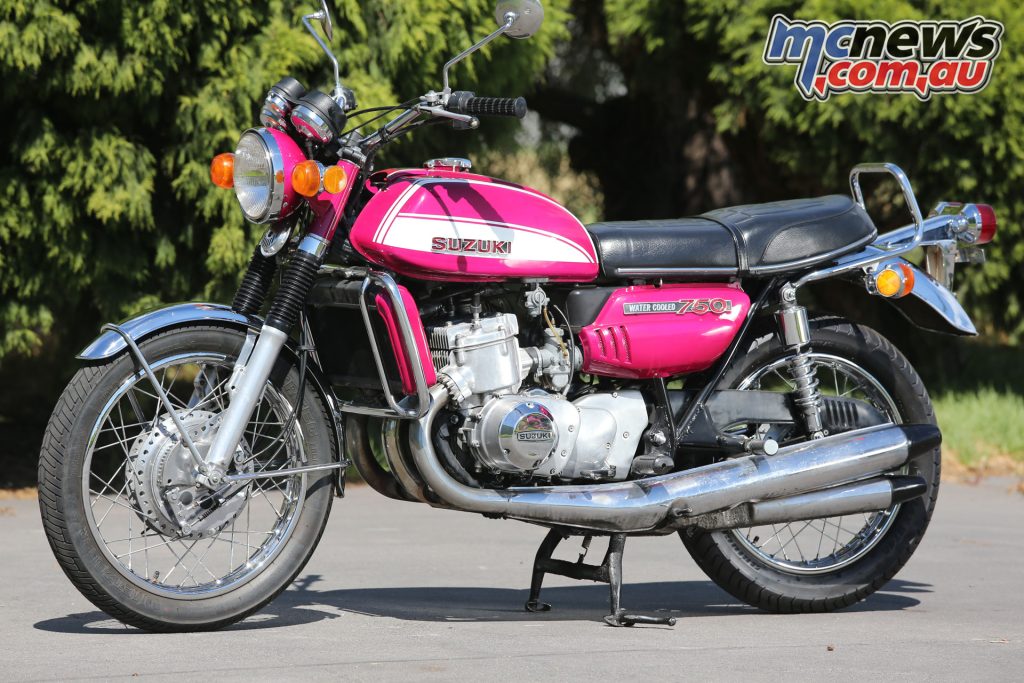
They also went down a different path, creating a GT, or Grand Tourer rather than an outright sporting bike. As Suzuki already had a two-stroke 500 cc twin, the T500, they followed expediency by simply adding another 70 x 64 mm cylinder.
Learning from the mistakes of Kawasaki with their air-cooled Mach III triple that initially suffered central cylinder overheating, Suzuki added water-cooling. A rarity at the time, water-cooling made sense as the engine would run longer and harder without overheating and seizing, always a problem with highly tuned two-strokes.
The large radiator and cooling system contributed to an increase in weight, but provided the GT750 with an enviable record of reliability, and the GT750 eventually rivalled any four-stroke in longevity.
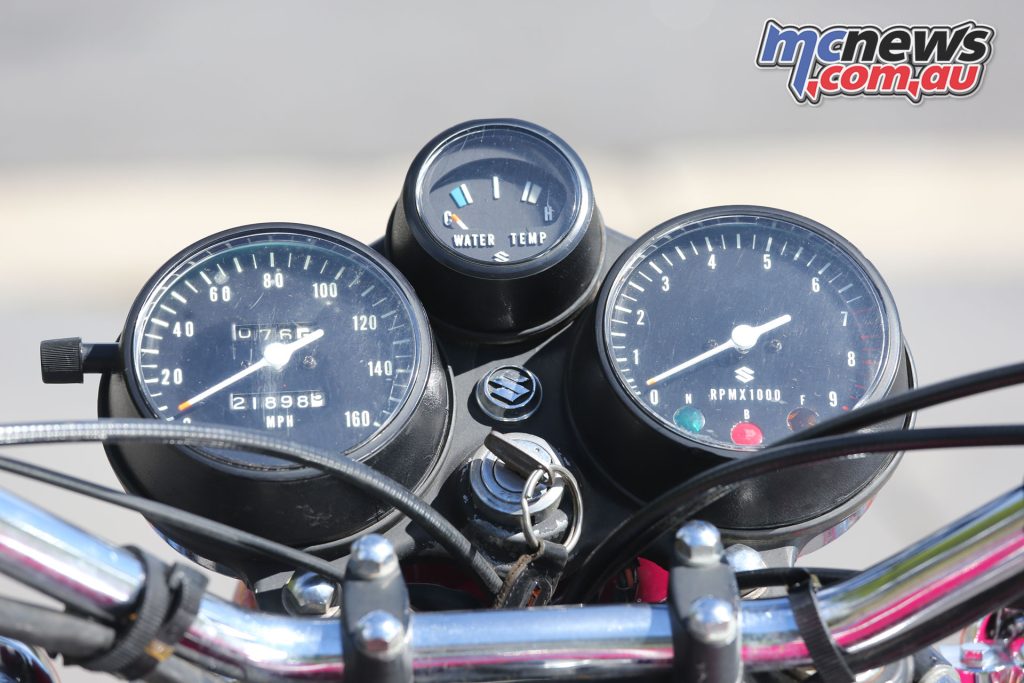
The 738 cc 120-degree triple was smooth, and with very mild porting and three 40 mm Mikuni carburettors, the power was a moderate 67 horsepower at 6500 rpm. But the most surprising thing about this two-stroke triple was the flat torque curve, and the GT750 had more low and mid-range power than anyone expected of a two-stroke.
It may have left a haze of blue oil smoke under hard acceleration, but the GT750 could show a clean pair of heels to most of the competition. After some initial scepticism, anyone who rode a GT750 came away impressed. Eschewing the emphasis on straight-line performance that characterised other Japanese Superbikes, the GT750 provided relaxed cruising and exceptional comfort.
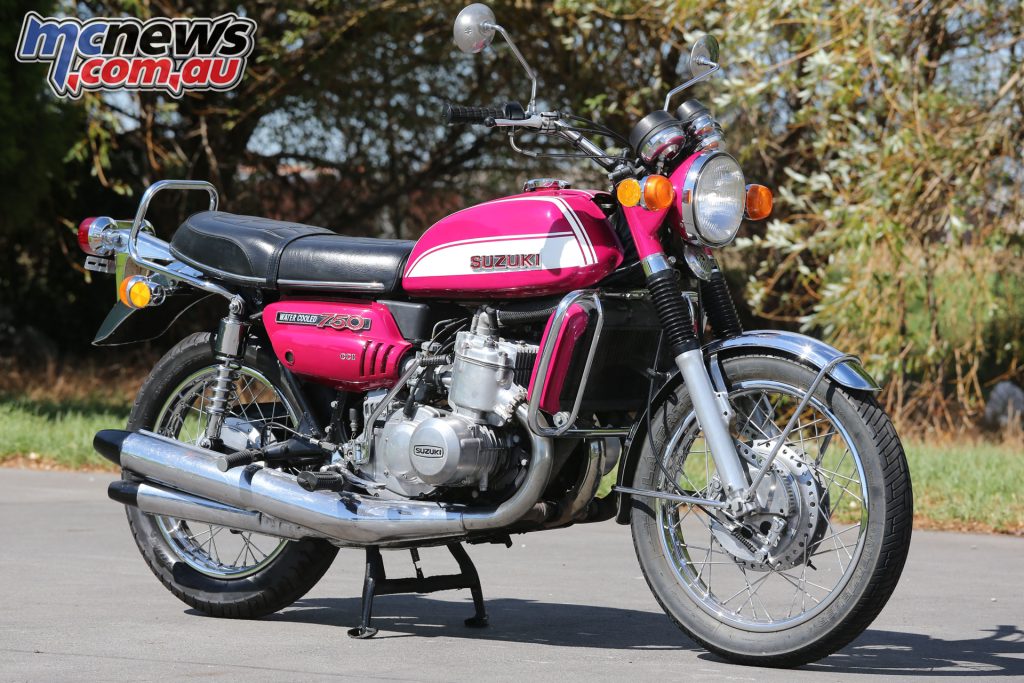
Much of this comfort was also provided by the GT750’s size. At 214 kg dry it was quite heavy, and while the handling was a little soft and soggy when ridden hard, the weight was low and the GT750 was a supreme long distance motorcycle.
Like many Japanese bikes of the time the suspension was also a little underdone, the skinny front forks barely adequate for the size and weight, and the shock absorbers oversprung and underdamped. But this wasn’t of any real concern for its more touring intention, and even the overdone Cadillac-inspired styling touches didn’t detract too much from the GT750’s appeal.
The symmetrical exhaust system, with black taper end cones, was designed to make it look like a four-cylinder, and the giant radiator dominated the front. Setting the GT750 off was a garish candy colour scheme. This was 1970s styling at its most extreme.
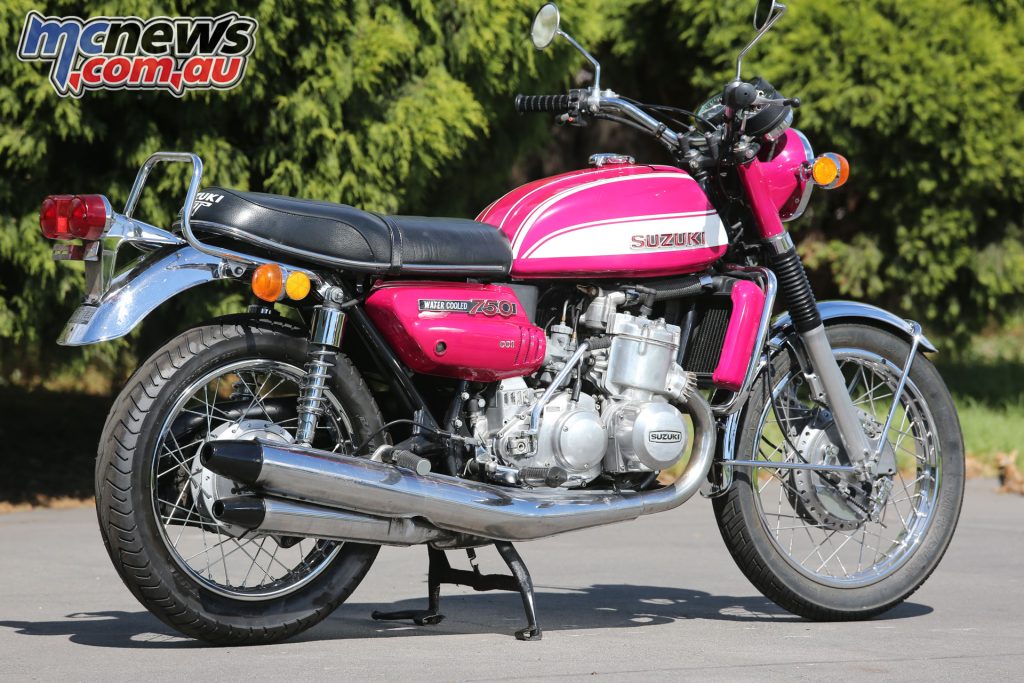
Not long after the GT750 was released Suzuki developed it into the TR750 Formula 750 racer. At the TR750’s race debut at Daytona in 1972 Jody Nicholas was timed at more than 275 km/h.
The most successful rider of the TR750 was the late, great Barry Sheene. Sheene won the FIM Formula 750 title in 1973, and the British Superbike titles in 1973 and 1974, and scored more victories than any other TR750 rider.
Sheene looked set to take the British title again in 1975 but was injured in a spectacular 280 km/h accident at Daytona. After this spill, the world’s highest profile crash ever, Sheene returned to win the British Superbike title in 1976.
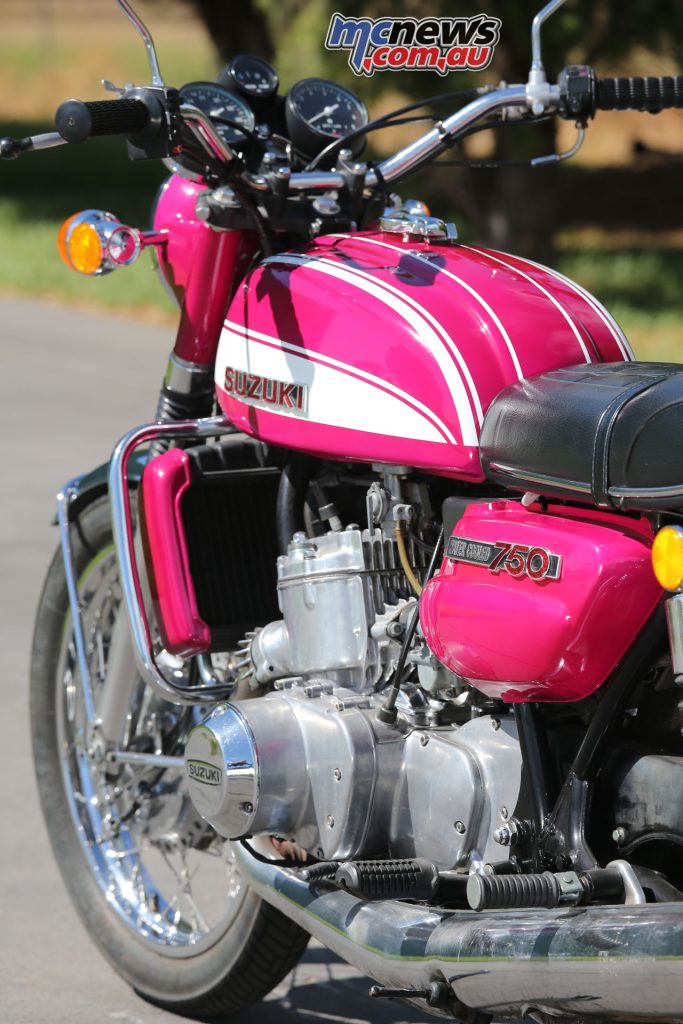
John Williams gave the TR750 its only TT victory; the 1976 Isle of Man 1000cc TT Classic. Williams set a race average speed of 174 km/h, with a fastest lap of 177 km/h.
The first model, the GT750J (pictured here) was released during 1971, and continued through into 1972. The J was the only model to feature a drum brake, but criticism of its spongy action and lack of feel led to twin front discs gracing the GT750K of 1973.
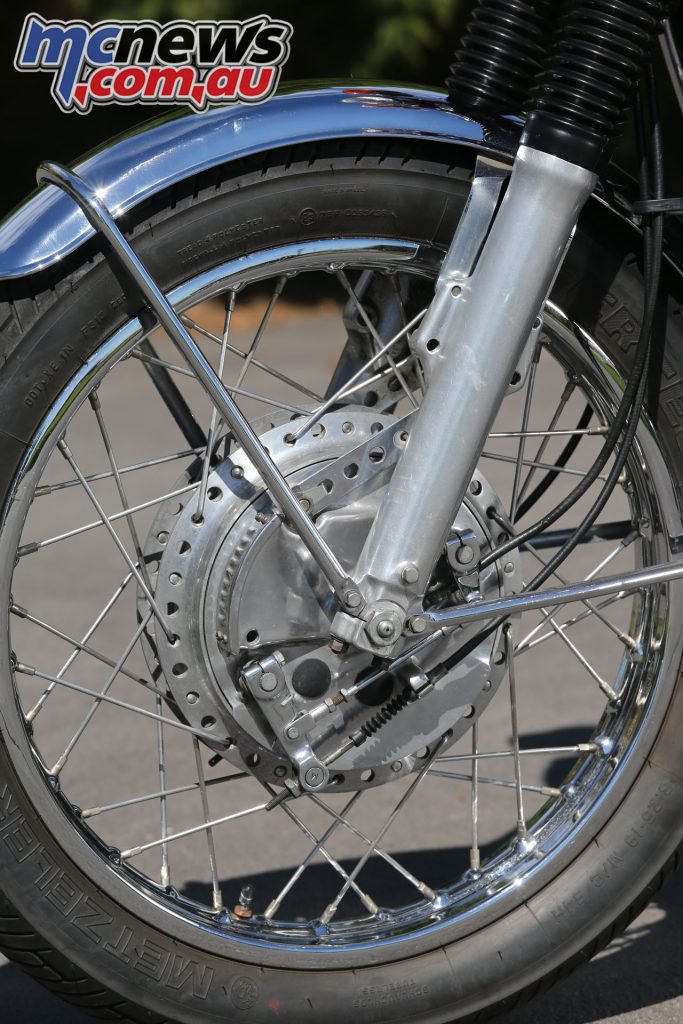
In 1975, with the GT750M, came an increase in power, to 70 horsepower, but ultimately the market demanded four-strokes. The GT750 could still leave most bikes behind but emission controls eventually signed its death knell. The Suzuki GT750 has earned more nicknames than just about any other motorcycle.
These range from Kettle, Water Buffalo, Water Bottle, and Water Bucket, to the Flexi-Flyer. Despite these derogatory names, the GT750 has one of the strongest followings in the classic motorcycle scene.
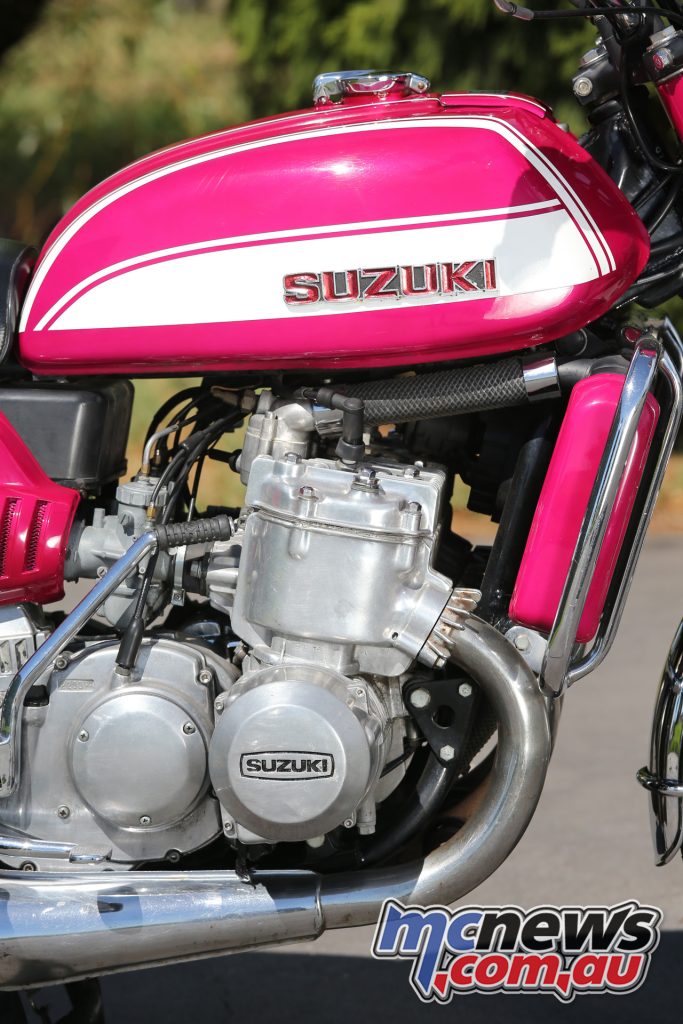
Although the GT750 continued until 1977, the release of the four-stroke GS750 in 1976 was the harbinger of the future. But when the GT750 died, so did one of the iconic motorcycles of the 1970s, and one of the most charismatic machines of the era.
1971 Suzuki GT750 Specifications
| 1971 Suzuki GT750 Specifications | |
| Engine | Two stroke, transverse three-cylinder |
| Capacity | 738 cc |
| Bore x Stroke | 70 x 64 mm |
| Compression Ratio | 6.7:1 |
| Cooling System | Liquid cooled |
| Induction | Three Mikuni VM 32 carburettors |
| Ignition | Battery and coil |
| Starting | Electric & kick |
| Clutch | Multi-disc, wet |
| Max Power | 50 kW / 67 hp @ 6500 rpm |
| Transmission | Five Speed |
| Final Drive | Chain |
| Front Suspension | Telescopic forks |
| Rear Suspension | Swinging arm fork with adjustable shock absorber |
| Front Brakes | Twin sided 200 mm drum |
| Rear Brakes | 190 mm drum |
| Front Tyre | 3.25-19in |
| Rear Tyre | 4.00-18in |
| Wheelbase | 1469 mm |
| Dry Weight | 214 kg |
| Fuel Capacity | 17 Litres |
| Top Speed (claimed) | 193 km/h |
Check out more historical motorcycle articles by Ian Falloon here (link).























